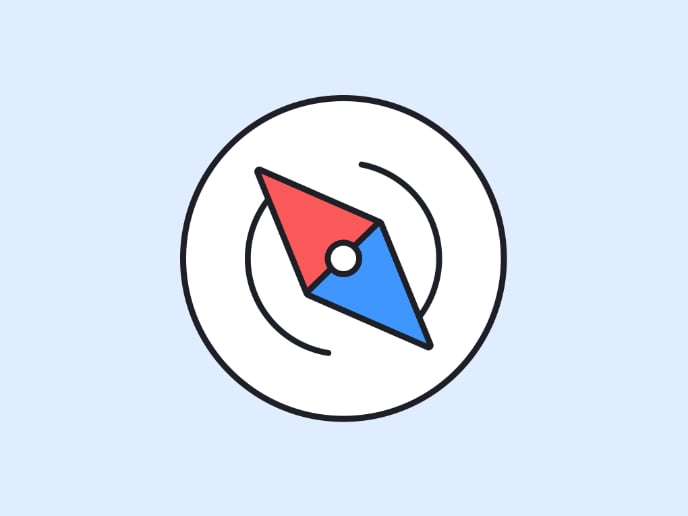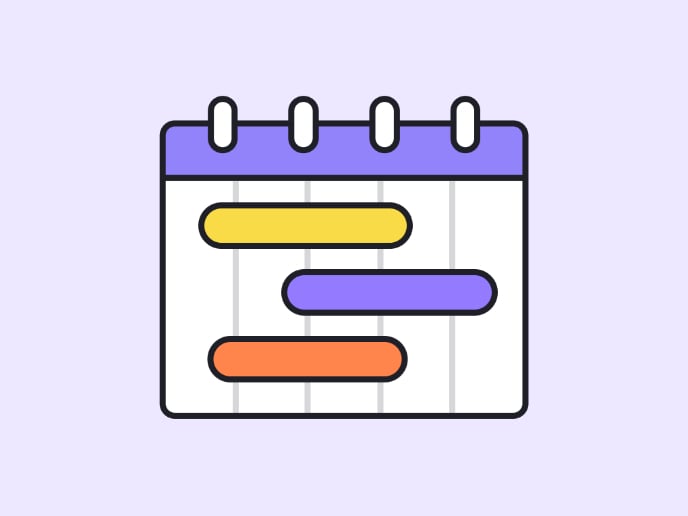How To Write User Stories That Actually Get Built
Learn how to write user stories that developers love, stakeholders understand, and actually make it into production
Ever written a user story that seemed perfect, only to watch it get endlessly debated, descoped, or stuck in backlog hell? You're not alone. The difference between user stories that ship and those that don't often comes down to how they're written. A good user story is about creating a shared understanding between everyone involved, from developers who'll build it to stakeholders who'll fund it. Let's break down how to do that!
What makes a user story truly buildable?
Before diving into the how-to, let's get clear on what separates shippable stories from wishful thinking. Buildable user stories share 5 characteristics:
- They're genuinely user-focused: Not "As a product manager, I want reports" but "As a team lead, I want to see my team's velocity trends so I can spot bottlenecks before they impact our deadline."
- They're small enough to build in one sprint: If your story needs a flowchart to explain it, it's not a story. It's an epic wearing a disguise.
- They have clear success criteria: Everyone knows what "done" looks like before writing a single line of code.
- They're testable: If QA can't figure out how to verify it works, developers can't figure out how to build it.
- They provide context without prescribing solutions: They explain the problem, not dictate the implementation.
The anatomy of a story that ships
Let's break down what actually goes into a user story. Here's the structure that works:
The classic format (with a twist)
But here's what most people miss. Specificity matters. Compare these:
Acceptance criteria that developers understand
Skip the vague requirements. Instead, write criteria that could become test cases:
Given I'm on the order history page
When I type "blue widget" in the search box
Then I see only orders containing items with "blue widget" in the name
And results appear within 2 seconds
And the search persists if I navigate away and return
Context that prevents endless debates
Add a "Why this matters" section:
- Current customer pain point (with data if you have it)
- Business impact of solving this
- What happens if we don't build this
Technical considerations (not solutions):
- Note any constraints: "Must work with current search infrastructure"
- Flag any dependencies: "Requires order history API from Epic-123"
- Call out any non-functional requirements: "Search results within 2 seconds for 95% of queries"
Writing stories that survive sprint planning
The real test of a user story comes during sprint planning. Here's how to write stories that make it through:
Start with the problem, not the feature: Instead of starting with "We need filters on the search page," start with "Customers can't find their repeat orders quickly, leading to 47% abandoning reorders according to last month's data."
Make the value crystal clear: Developers and stakeholders need to understand why this matters. Include:
- Number of users affected
- Current workaround pain (if any)
- Potential impact (time saved, revenue increased, support tickets reduced)
Size it right: A story that's too big gets deprioritized. Too small, and it's not worth the overhead. Aim for stories that:
- Can be demoed in one sprint review
- Deliver value independently
- Don't require multiple team coordination
Include the "what's not included"
Prevent scope creep by being explicit:
- "This story covers search within order history only, not global site search"
- "Advanced filters will be handled in a separate story"
Writing great user stories is just one part of the Agile process. Learn how stories flow through sprint planning, daily standups, and retrospectives in our Building Agile Teams course.
Common pitfalls that kill good stories
- The solution disguised as a story: "As a user, I want a dropdown menu with 5 filter options..." Stop. You're designing, not defining needs. Let the team figure out if a dropdown is the best solution.
- The Swiss Army knife story: "As a user, I want to search, filter, sort, export, and share my orders..." Each of these is probably its own story. Break it down.
- The missing context: "As a user, I want faster load times." Faster than what? For which pages? What's acceptable? Without context, this story will ping-pong between refinement sessions forever.
- The edge case parade: Yes, edge cases matter. No, they don't all belong in the acceptance criteria. Focus on the happy path first, then create separate stories for significant edge cases.
A real example that could get shipped
Here's a story that could potentially make it to production:
Title: Quick reorder from order history
Story: As a restaurant manager who orders supplies weekly
I want to search my past orders by product name
So that I can quickly reorder my regular items without browsing the entire catalog
Context:
- 68% of our B2B customers reorder the same items monthly
- Current process: manually browse catalog or contact sales (avg 12 minutes)
- Target: reduce reorder time to under 2 minutes
Acceptance Criteria:
- Search box appears on order history page
- Searching filters past orders in real-time as I type
- Results show orders containing products matching search term
- Clicking an order shows full details with "Reorder" button
- Search works for partial product names (e.g., "napk" finds "napkins")
- Results load within 2 seconds for users with <100 past orders
Not included:
- Search within product descriptions
- Advanced filters (date range, price)
- Bulk reorder functionality
Dependencies:
- Order history API must support product name queries
- Reorder API from US-234 must be complete
See how specific this is? Developers know exactly what to build. QA knows exactly what to test. And stakeholders understand exactly what value they're getting.
Making stories stick
Writing good stories is only half the battle. Here's how to ensure they actually get built:
Collaborate before you commit
- Run draft stories by a developer and designer before sprint planning
- Get input from customer support on real user language
- Validate technical feasibility early
Keep stories living documents
- Update acceptance criteria based on sprint planning discussions
- Add clarifications as questions arise
- Link to mockups, technical docs, or customer feedback
Track what happens after
- Note which stories sailed through vs. got stuck
- Identify patterns in stories that ship successfully
- Refine your approach based on what works for your team
Your template for stories that ship
Here's a template you can copy and adapt:
Title: [Specific capability in 5-7 words]
As a [specific user role with context]
I want [specific capability, not implementation]
So that [measurable benefit/outcome]
Background:
- Problem: [Current pain point with data]
- Impact: [Why this matters now]
- Success metric: [How we'll measure improvement]
Acceptance Criteria:
Given [context]
When [action]
Then [expected outcome]
[Add 3-5 more specific scenarios]
Out of Scope:
- [Related feature that's not included]
- [Edge case handled separately]
Dependencies:
- [Technical prerequisite]
- [Required decision or approval]
Notes:
- [Technical constraints]
- [Link to designs/mockups]
Stories that ship change products
Good user stories provide enough detail to build with confidence while leaving room for creative solutions. They focus on user value, not feature lists. Most importantly, they create shared understanding across your entire team.
Start with your next story. Pick something small. Apply these principles. Watch it sail through sprint planning and into production. Once you get the hang of it, you'll wonder how you ever worked any other way.
At the end of the day, the best user story is the one that actually ships and delivers value. Everything else is just process theater.
You might also like

Breaking into Product Management Through Paths Less Traveled

Building Your First Product Roadmap: A Step-by-Step Guide

Communicating Across Teams
Popular Courses

Introduction to Product Management

Writing Effective Product Specs








